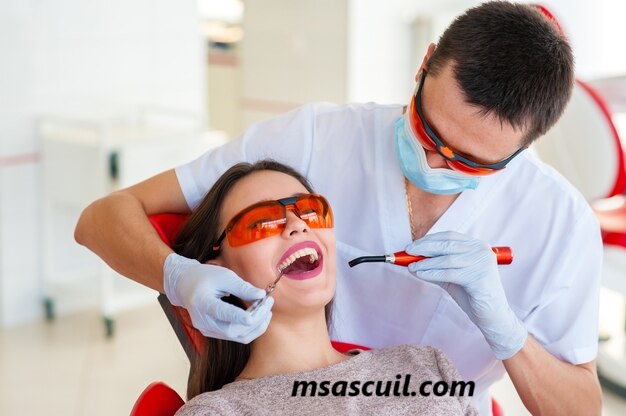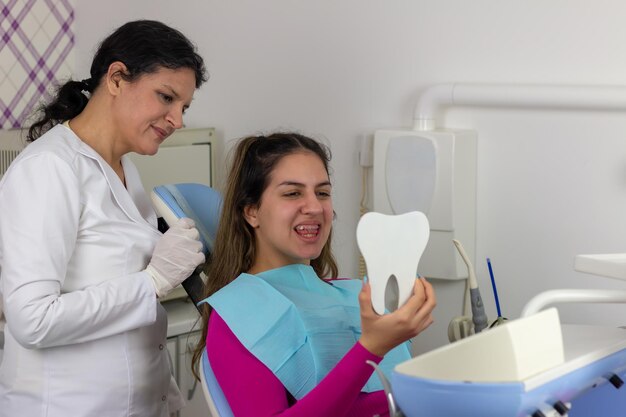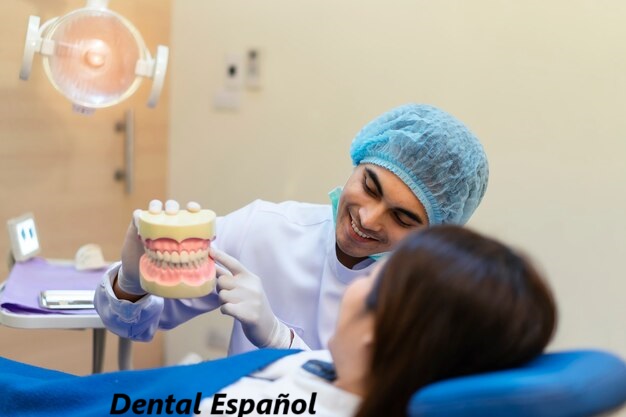Introduction
Dental español is a crucial aspect of modern dentistry, especially in diverse communities where Spanish-speaking patients seek quality dental care. The ability to communicate effectively in Spanish not only enhances patient comfort but also ensures that they fully understand their treatment options, procedures, and aftercare instructions. This focus on bilingual services is essential in fostering trust and satisfaction among patients who may otherwise feel intimidated or confused in a healthcare setting.
In today’s globalized world, the demand for dental español services is on the rise. Many dental practices are recognizing the importance of offering services in multiple languages to cater to a broader audience. This shift not only reflects a commitment to inclusivity but also highlights the need for clear communication in achieving optimal health outcomes. By integrating dental español into their practice, dentists can provide a welcoming environment for Spanish-speaking patients, ultimately leading to better oral health and overall well-being.
The Importance of Dental Español
Offering dental español services is vital for several reasons:
Enhanced Communication
Language barriers can lead to significant misunderstandings regarding treatment plans and care instructions. Providing dental services in Spanish ensures that patients receive clear, accurate information tailored to their language needs. This clarity helps patients feel more informed and confident about their dental health decisions.
Increased Accessibility
Many Spanish-speaking individuals may hesitate to seek dental care due to language difficulties, which can prevent them from receiving necessary treatment. By offering bilingual services, dental practices can remove these barriers, making it easier for Spanish-speaking communities to access essential dental care. This increased accessibility encourages more individuals to prioritize their oral health.
Building Trust
When patients feel understood and respected in their native language, they are more likely to develop trust in their healthcare providers. This trust is crucial for fostering long-term relationships and encouraging regular dental visits. A trusting environment also promotes adherence to treatment plans, as patients feel more comfortable discussing their concerns.

Cultural Sensitivity
Understanding cultural differences can significantly enhance patient care and satisfaction. Dental professionals who speak Spanish can connect better with their patients’ backgrounds, leading to more personalized and respectful interactions. This cultural sensitivity fosters a welcoming atmosphere that encourages open communication and understanding.
Improved Health Outcomes
Effective communication is directly linked to better health outcomes in dental care. Patients who fully understand their treatment options are more likely to follow through with recommendations and adhere to aftercare instructions. This understanding leads to improved oral health and a greater likelihood of successful treatment results.
Services Offered in Dental Español
Dental practices that offer dental español typically provide a wide range of services tailored to meet the needs of Spanish-speaking patients:
Preventive Care
Preventive care encompasses routine check-ups, cleanings, and oral health education, which are vital for maintaining good dental health. These services can be effectively communicated in Spanish, ensuring that Spanish-speaking patients understand the importance of regular visits and proper oral hygiene practices. By prioritizing preventive care, patients can reduce their risk of developing more severe dental issues in the future.
Restorative Dentistry
Restorative dentistry includes services such as fillings, crowns, and bridges that repair or replace damaged teeth. When explained thoroughly in Spanish, patients can better understand their options and the procedures involved. This clear communication helps patients make informed decisions about their dental care and encourages them to seek necessary treatments promptly.
Cosmetic Dentistry
Cosmetic dentistry focuses on enhancing the appearance of smiles through procedures like teeth whitening and veneers. Discussing these options in detail in Spanish allows patients to understand the benefits and potential outcomes of each treatment. This informed approach empowers patients to choose the best cosmetic solutions for their individual needs and preferences.
Orthodontics
Orthodontics involves correcting misaligned teeth and jaws using braces or aligners. Clear explanations provided in Spanish help patients grasp the benefits of orthodontic treatment, including improved function and aesthetics. Understanding the commitment required for such treatments encourages Spanish-speaking patients to engage actively in their orthodontic journey.
Oral Surgery
Oral surgery includes complex procedures such as extractions or implants that require careful planning and communication. Clear communication regarding risks, benefits, and aftercare instructions in Spanish ensures that patients are well-informed about their surgical options. This understanding is crucial for alleviating anxiety and ensuring proper post-operative care for optimal recovery.
Challenges Faced by Dental Practices
While the integration of dental español services presents numerous benefits, there are also challenges that dental practices may encounter
Staff Training
To provide effective dental español services, staff members must be proficient in Spanish, which necessitates investment in comprehensive training programs. These programs should focus on both language skills and dental terminology to ensure clear communication with patients. Ongoing training helps maintain proficiency and keeps staff updated on best practices in bilingual patient care.
Resource Allocation
Creating or accurately translating bilingual materials such as brochures, consent forms, and educational resources is essential for effective patient communication. This resource allocation ensures that Spanish-speaking patients have access to important information about their dental care in their preferred language. Investing in these materials not only enhances patient understanding but also promotes a more inclusive practice environment.
Cultural Competence
Cultural competence goes beyond language proficiency; it involves understanding the diverse backgrounds and values of patients. Dental professionals must develop skills to recognize and respect cultural differences that may impact patient care. This understanding fosters trust and improves the overall patient experience by addressing unique needs and preferences.
Marketing Efforts
Attracting Spanish-speaking patients often requires targeted marketing strategies that highlight the availability of bilingual services. Effective marketing can include advertisements in Spanish-language media, community outreach, and partnerships with local organizations. By emphasizing their commitment to serving Spanish-speaking communities, dental practices can build awareness and encourage more patients to seek care.

Maintaining Quality Care
As dental practices expand their bilingual offerings, it is crucial to maintain the same high standards of quality care across all services. This includes ensuring that all staff members are trained to provide care that meets the needs of both English- and Spanish-speaking patients. Consistently delivering quality care fosters patient loyalty and enhances the reputation of the practice within the community.
The Future of Dental Español
As demographics continue to shift in many regions, the demand for dental español services will likely grow. Dental practices that proactively embrace this change will not only enhance their patient base but also improve community health outcomes. The future of dentistry lies in its ability to adapt to the needs of diverse populations while maintaining high standards of care.
Conclusion
In conclusion, dental español is more than just a service; it represents a commitment to inclusivity and effective communication within the healthcare system. By offering bilingual support, dental practices can bridge the gap between language barriers and ensure that all patients receive the quality care they deserve. The integration of dental español into everyday practice will lead to improved patient satisfaction, better health outcomes, and a stronger sense of community within healthcare settings.



